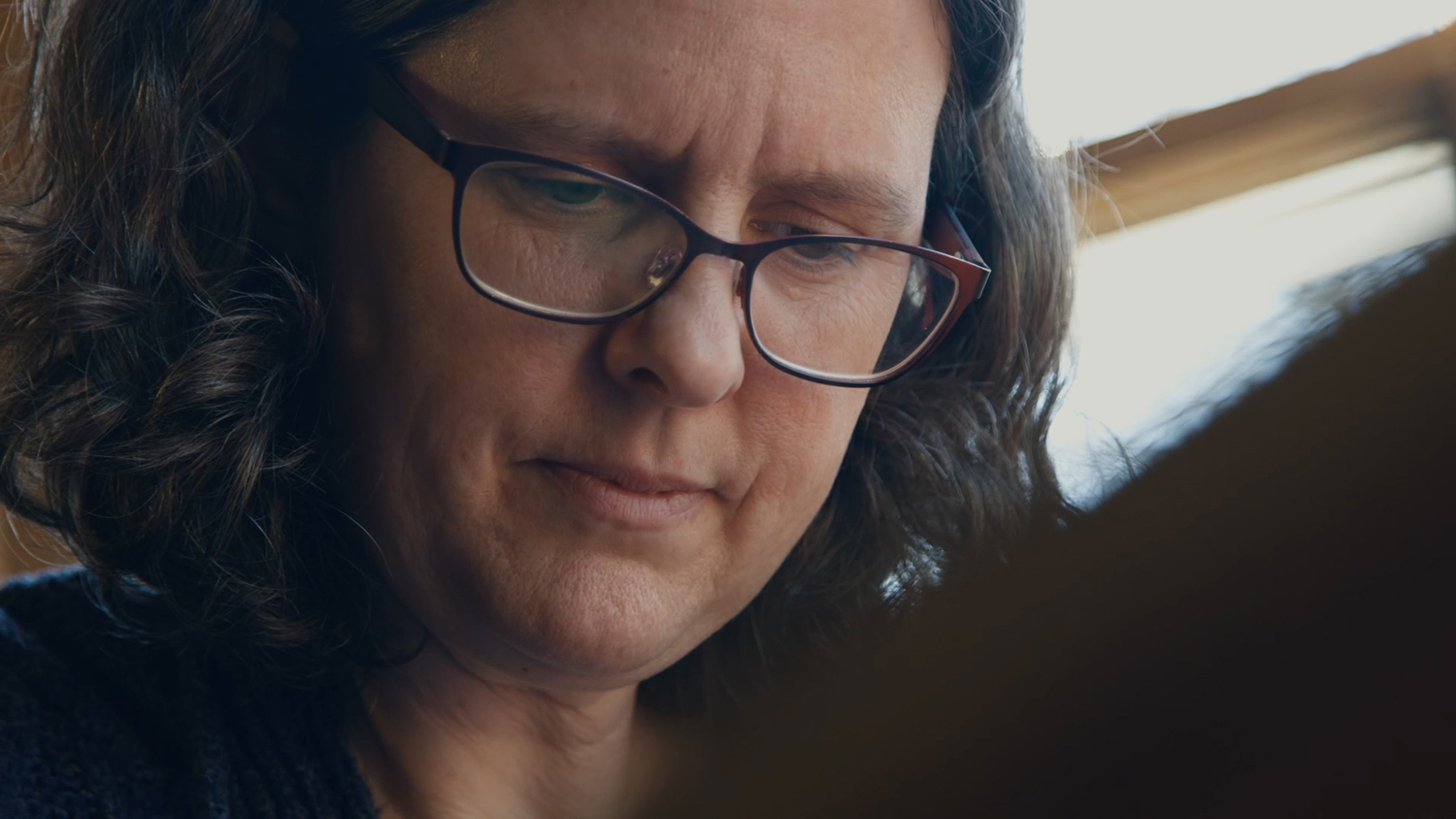SYNOPSIS
Eye of the Storm. James Morrison is widely recognized as one of Britain’s finest landscape artists. His work hangs in the homes of JK Rowling and the Royal Family, as well as in museums, and private collections around the world. But in the twilight of his life he faces his greatest challenge: his eyesight is fading fast, and he has one more major painting to complete.
From his studio just outside Montrose, Morrison can hear the crashing North Sea. On the wall is a drawing of Mickey Mouse that he completed when he was 8 years old, at the outset of World War II.
“My sight has quite badly deteriorated,” Morrison admits. “And the very thought of coming in here and not being able to pick up a brush and do something with it really terrifies me. It really appalls me.”
Nevertheless, he has agreed to let filmmaker Anthony Baxter follow him as he picks up the brushes again at the age of 85 after being sidelined by a series of operations. And while doing so he reflects on an extraordinary artistic life.
Eye of the Storm is a fascinating exploration of what it means to be a landscape painter. It is also the poignant and universal story of a creative mind dealing with his own mortality, and the physical frailties that catch up with all of us.
The film movingly intertwines Morrison’s struggle with old age, with his lively views as a much younger painter, captured in remarkable archive filmed more than 50 years ago.
Pivotal moments in Morrison’s career are also brought vividly to life by Scottish animator Catriona Black. Indeed, her own journey to understand Morrison’s artistic genius, in order to do justice to it in the film, represents a story within a story in this multi-layered and visually stunning documentary scored by Karine Polwart.
Morrison explains that it all started in Glasgow. Son of a shipyard pipefitter, Morrison entered the famous Glasgow School of Art in 1950, under the tutelage of David Donaldson, a towering figure in the Scottish art world at the time. While other students embraced the overtly political and abstract art then fashionable, Morrison was attracted to the landscape painters of a different era – such as Claude Lorrain, Jean-François Millet, and Scotland’s own Horatio McCulloch.
Morrison’s first major subjects were the crumbling Glasgow tenements, home to thousands of working-class families soon to be relocated to the outskirts of the city. Though painted without people, Morrison’s stark and haunting paintings are memorials to a lost way of life (“I was painting in areas of Glasgow that no longer exist”) and would find their place in major museums. And his concern with documenting fleeting, disappearing worlds, would become a recurring feature of his work.
Morrison’s work then underwent a dramatic shift when he moved to the tiny fishing village Catterline in Northeast Scotland in 1959. Here Morrison effectively established what would become a famed artists’ colony — and its second member was the great Joan Eardley. As he views archive from the time, which he hasn’t seen in half a century, Morrison relives his artistic and personal friendship with the woman who some consider the greatest Scottish artist of the 20th century.
While Eardley became beloved for her portraits of children, Morrison never painted the human figure. Instead he focused on the skies and landscape of Angus and the Mearns that would become a distinctive feature of his work.
“It is my struggle with myself,” a much younger Morrison tells us, while painting on the beach at St Cyrus in an old BBC film. “Strangely enough in this landscape I’m trying to face up to the whole question of death. I’m trying to create for myself here an area of solace.”
Morrison’s quest for meaning in the landscape took him, ultimately, to the least populated part of the planet – the high arctic reaches of Canada and Greenland.
“I had no idea what I was getting into,” Morrison says wryly, settling into an extraordinary tale, which includes hair raising flights over glaciers and arctic bison, and a confrontation with a polar bear, all the result of his determination to paint the vanishing arctic wilderness.
As Morrison returns to his studio to paint, there is a sense of time running out. His memory is now failing as well, and he needs to refer to a piece of paper in his pocket to remember the director’s name.
A new solo exhibition of his work in Edinburgh – his 25th – is soon to be mounted at The Scottish Gallery. Despite his worsening sight, Morrison has promised the organisers one last work.
As he shuffles through a half dozen different pairs of glasses, he expresses his frustration at not being able to focus his eyes on the canvas properly. He is on the verge of giving up, insisting gruffly that: “I certainly will not send paintings from this studio if they are below an acceptable standard!”
But to the accompaniment of a favourite piece of Beethoven, Morrison gives it one last try. As he begins painting on a pristine white board, he miraculously summons up the energy of the brash young painter he once was, his brush flashing across the canvas, leaving behind great waves of lapis lazuli.
But with the first case of COVID in the UK still a few weeks away, will Morrison, now very frail, complete his final work and make an appearance at his final exhibition?










